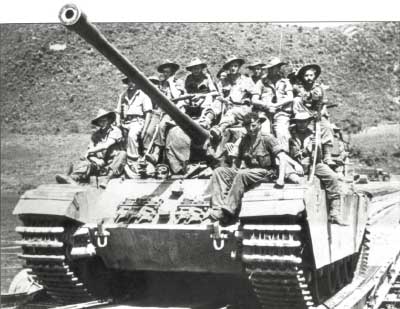
Then in 1930 they were able to acquire ten examples of its successor, the Renault NC1 (designated Otsu-Gata Sensha or "Type B Tank"). During trials, the gasoline engine of the Vickers C caught fire, leading the Japanese design team to call for a diesel engine for use in indigenous produced tanks.

In March 1927, the IJA also bought a Vickers Medium C to use for design study. The Japanese reluctantly imported the Renault FT tanks. However, the newer tanks were not available as these countries had difficulties supplying them to their own armored forces, and the only available model was the older Renault FT. The IJA therefore sent a mission to purchase more tanks from Britain and France, requesting newer designs. However, the greatest problem was equipping these units, as the Japanese did not have any indigenous tank production capability at that time. Trials with these vehicles were successful, and the army decided to establish an armored force in 1925, planning to form three light tank battalions and one heavy tank battalion. The Mk IV was purchased in October 1918 while the Whippets and Renaults were acquired in 1919. These models included one British Heavy Mk IV and six Medium Mark A Whippets, along with thirteen French Renault FTs (later designated Ko-Gata Sensha or "Type A Tank"). Near the end of World War I, the Japanese showed an interest in armored warfare and tanks and obtained a variety of models from foreign sources. Initial tank procurement Japanese Whippets Later, during the last year of World War II the newest and best Japanese designs were not used in combat they were kept back in expectation of defending the Japanese Home Islands. Although initially the Japanese used tanks to good effect in their campaigns, full-scale armored warfare did not occur in the Pacific and Southeast Asian theaters as it did in Europe, and tank development was neglected in favor of naval activities.

The Imperial Japanese Army (IJA) initially purchased foreign tanks for evaluation during World War I, and began developing its own indigenous designs during the late 1920s.ĭue to the war with China, Japan produced a large number of tanks.


 0 kommentar(er)
0 kommentar(er)
